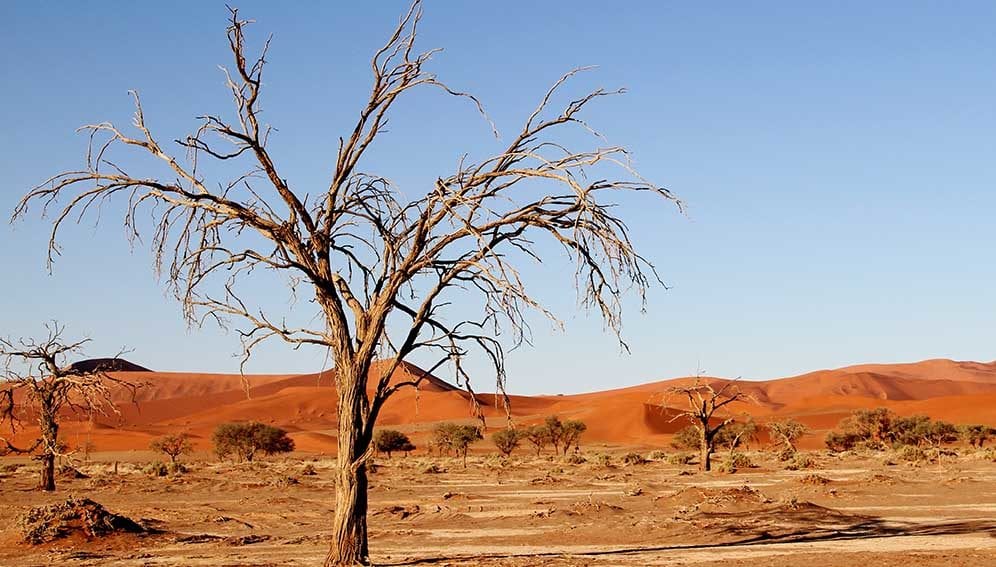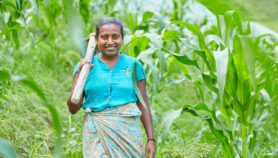12/03/20
In new hostile climate, drought-tolerant crops, systems needed on unprecedented scale

By: Martin Kropff
Send to a friend
The details you provide on this page will not be used to send unsolicited email, and will not be sold to a 3rd party. See privacy policy.
Last year, droughts devastated staple food crops across the developing world, cutting production by about half in some countries. A stream of reports from Central America, Eastern and Southern Africa as well as the Asia-Pacific region painted a grim picture of suffering and upheaval.
Poor harvests subjected tens of millions to chronic hunger, prompting various governments to declare states of emergency. In Central America, survey results, including some from the US government, cited climate-induced food shortages as the main reason for emigration from drought-hit areas.
Extreme weather, with its appalling consequences, demands an extraordinary response. Redoubled efforts must focus on building resilience into the developing world´s major food systems.
Fortunately, agricultural science has already provided a wide range of solutions and continues to generate more.
Conservation agriculture and drought-tolerant crops
New technologies from the International Maize and Wheat Improvement Center (CIMMYT) suggest how developing countries can work toward a better future.
Drought-tolerant cereals show promise for helping stabilise maize and wheat production. Through many years of conventional plant breeding, researchers have developed more than 160 maize varieties for sub-Saharan Africa that yield 25-30 percent more than farmers’ standard varieties under drought, while performing at least equal to these under normal rainfall.
According to a study in Zimbabwe, farmers growing the drought-tolerant maize harvested up to 600 kilograms more grain per hectare in drought years – enough to feed a family of six for nine months. The improved varieties are already grown on 2.5 million hectares, benefitting around 54 million people. Researchers are also poised to develop wheat lines with tolerance to drought and heat, having identified genes for these traits though cutting-edge collaborative science.
“Extreme weather, with its appalling consequences, demands an extraordinary response. Fortunately, agricultural science has already provided a wide range of solutions and continues to generate more.”
Martin Kropff, director general, International Maize and Wheat Improvement Center
To provide maximum benefits, drought-tolerant crop varieties need to form part of smart farming systems that capture and conserve moisture. One such system – conservation agriculture – combines diverse crops with reduced or no ploughing, and the practice of leaving stalks and other crop residues on the ground after harvest. Already widely applied in South America´s Southern Cone, this system has also made inroads in the predominant rice-wheat system of South Asia´s Indo-Gangetic Plain, a major breadbasket for the region. Conservation agriculture is being widely promoted in parts of sub-Saharan Africa, Mexico and elsewhere.
Globally, around 80 per cent of food production depends on increasingly erratic rainfall. To ensure better water supplies, many farmers have purchased their own small pumps for irrigation, often using water from aquifers underground. One drawback to this practice is that it can lead to groundwater depletion, which is already a serious problem in Northwest India, for example. In searching for solutions, researchers there have recently shown how farmers can grow just as much rice and wheat using only about half the water normally needed, through conservation agriculture combined with the use of a drip irrigation system that delivers just the right amount of water, plus fertiliser to crop roots through underground pipes.
Scaling-up drought solutions
The challenge now is to mainstream the growing portfolio of drought solutions – a task demanding not only technical acumen, but institutional vision.
Partnerships between private seed companies and public crop breeding programs, for example, played a vital role in getting drought-tolerant maize into farmers’ fields. But the people benefitting from this innovation today still constitute only a fraction of the 300 million Africans whose diets depend on maize. Clearly, such partnerships must be expanded.
In order for improved technologies to have the desired effect, government and partner organisations must get their policies and decisions right. Recent research in Bangladesh, for example, has identified new policy measures for enhancing the efficiency of irrigation services. In addition, organisations must base their decisions and planning before and during droughts on information from new systems that use remote sensing and climate data analysis for drought monitoring and early warning.
Science-based climate projections tell us that drought will become even worse in the decades ahead. Only by implementing drought solutions on an unprecedented scale, will countries be able to avoid a future that leaves millions of people at the mercy of a hostile climate.













